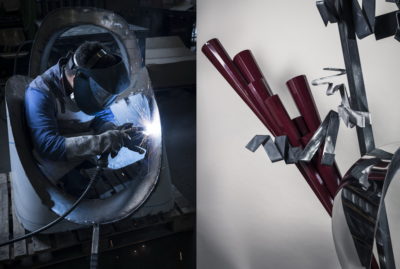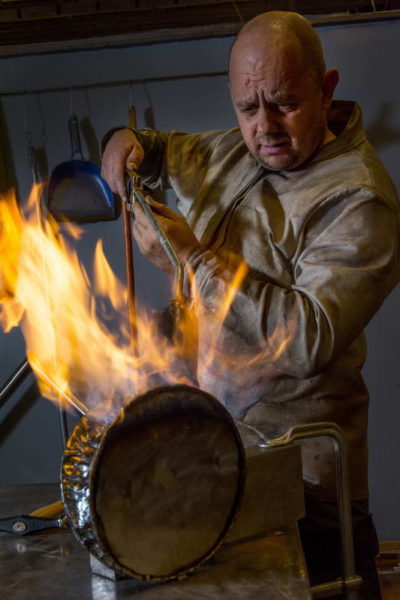“My philosophy – my art“
Of all the arts, metal sculpture is literally the heaviest. From the outset it requires space, width and height. It uses only the heaviest and weightiest materials – iron, brass, steel and bronze. And it is created with fire and beating, in other words with force and violence. It is therefore loud and produces noise, dirt, work, sweat and exhaustion. And the material is also recalcitrant – it needs to be forged for hours and even then offers only a small window in which it can be worked before hardening again.
I believe that working with steel and other very hard materials also requires a certain hardness – a preparedness for physical effort, masculinity, and a passion that does not shrink from suffering. Each one of my objects is a product of my energy. I beat, stamp and impress my ideas with a hammer into the red-hot metal – a truly volcanic activity: strength and energy, tension and eruption, heat and cooling. I think that a good sculpture stores this strength and energy within it. How it happens is a mystery, but it happens, and the objects are an energy-laden and emotional territory.

This investment of strength is also at the basis of the strong, direct formal and material language of metal objects in general and mine in particular. I have always been convinced that the most fascinating aspect of this language is its ability to express the fragile and breakable. This is what I seek to express and visualize in my sculptures: Love. Fear. Development. Thought. Hope. Suffering. Loss. Change. Discontinuity.
These things are invisible, but I give form to them with metal – as concretely as I can, with angles and edges. Suddenly these great feelings are there and we can hazard a look at something that is usually hidden from us. That is what interests me. And to this end I need to find forms.The hardness of the sculpture stands in particularly effective contrast to the fragility of feelings; the immovability and stability of a metre-high sculpture suddenly becomes exciting when it deals with impermanence. Steel, the material I use most of all, is extremely hard and ideal for expressing these contrasts. I am also particularly fond of steel because it appears at first glance to be so rigid and monotonous, when in fact in the hands of the sculptor it reveals a plethora of colours, shading and forms, particularly when the irregularities of the material and the traces left by the sculptor in the object are taken into account. It is my aim as an artist to liberate and concentrate elemental forces and to communicate them to the observer. I therefore like it when my objects are touched. It’s a good start if I can touch someone with my work.”

